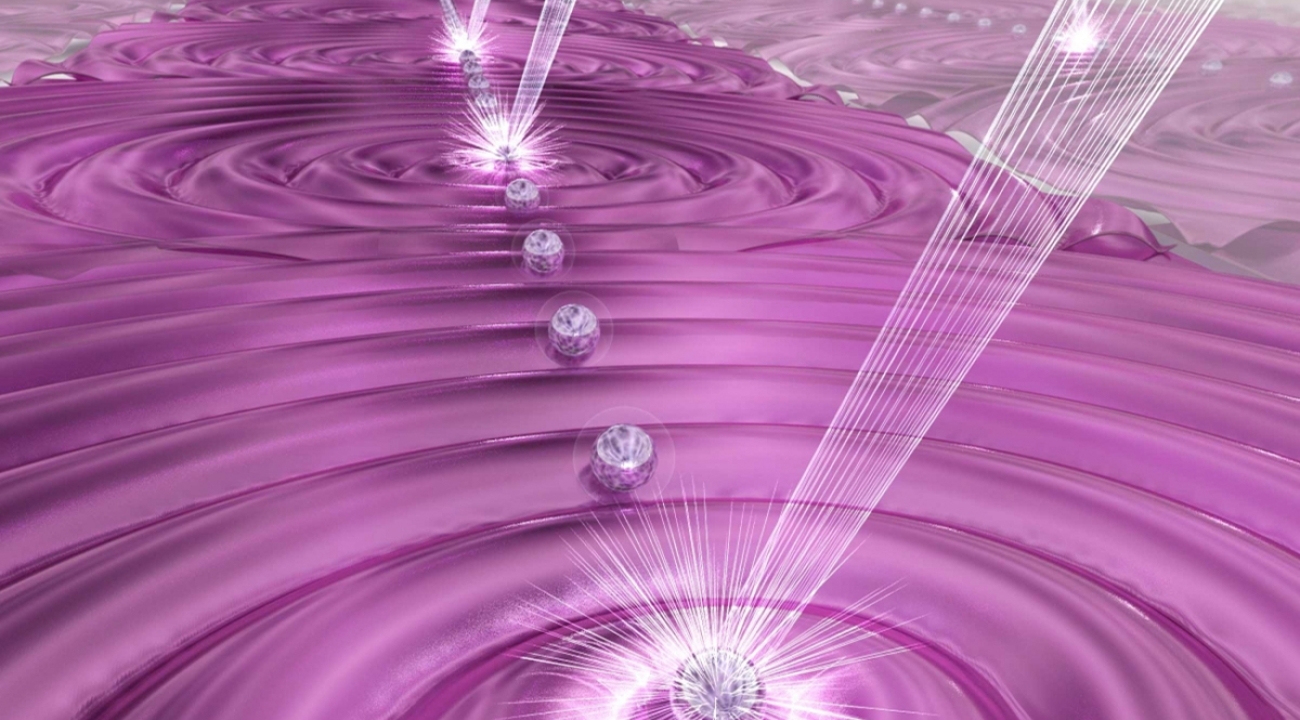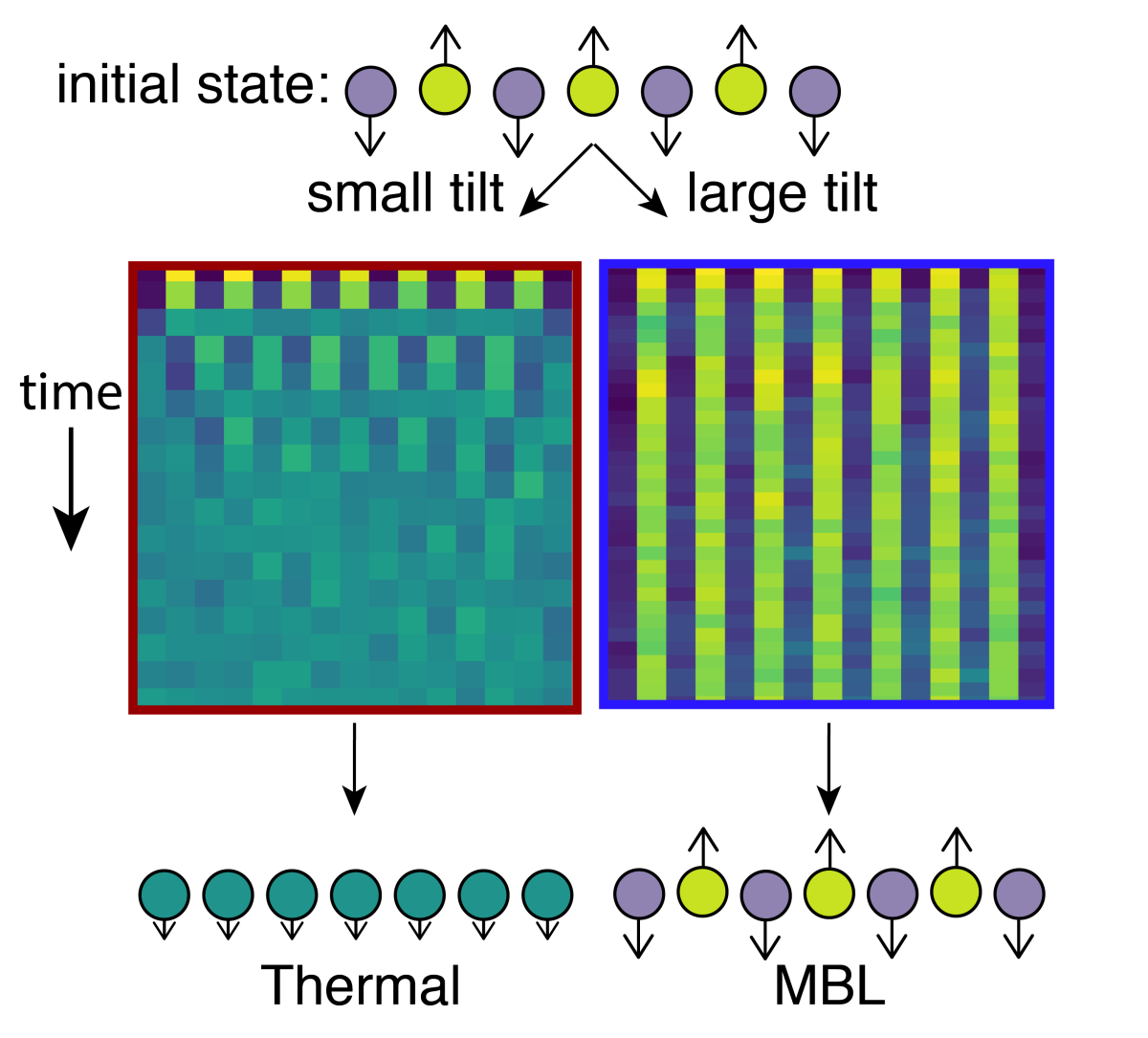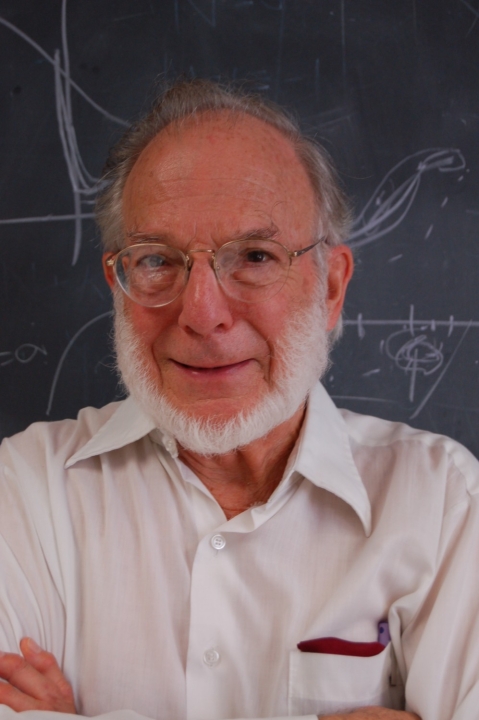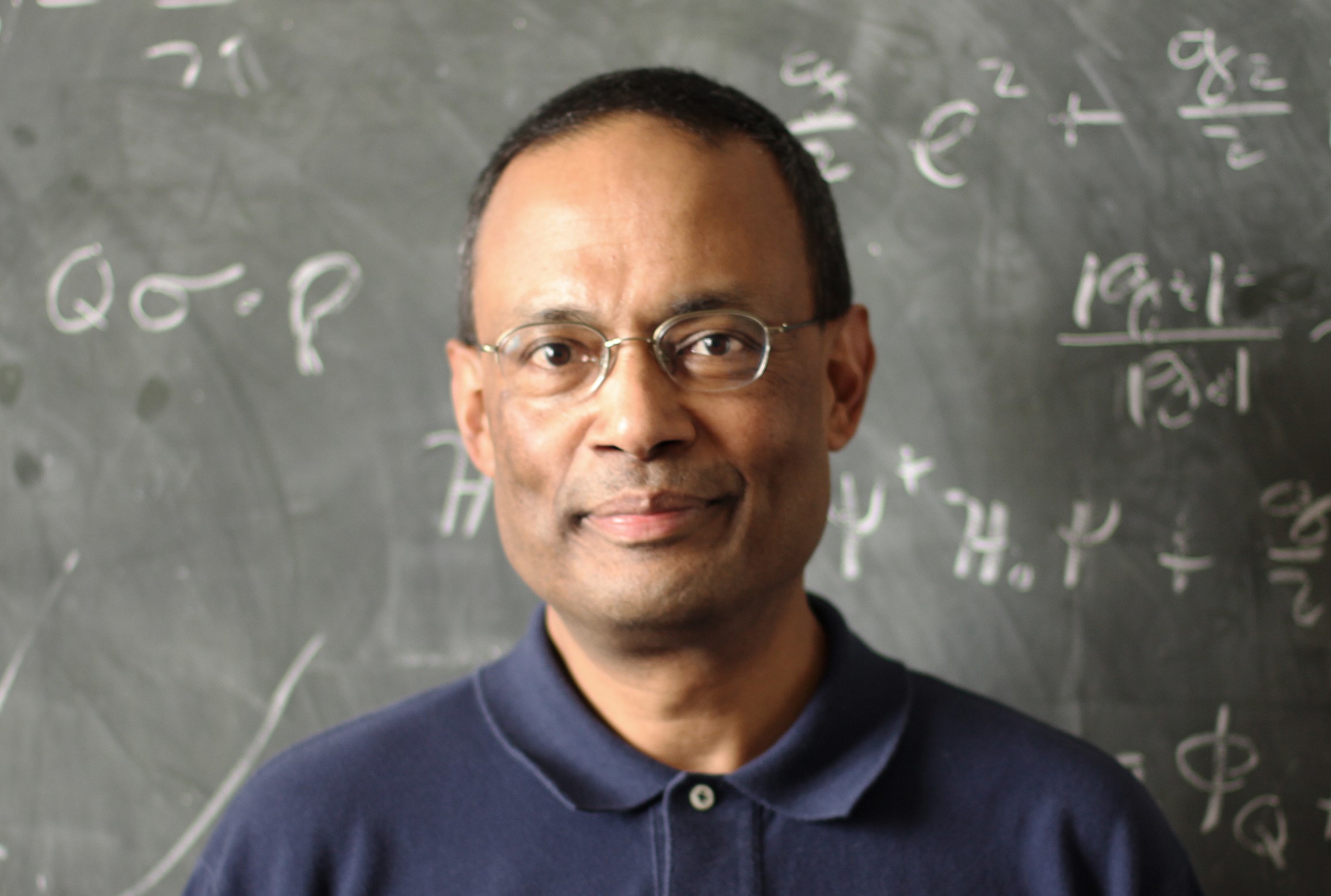In a Smooth Move, Ions Ditch Disorder and Keep Their Memories
- Details
- Category: Research News
- Published: Monday, December 20 2021 10:46
A Persian adage, notably wielded by Abe Lincoln(link is external) and the band OK Go(link is external), expresses the ephemeral nature of the world: “This, too, shall pass.”
Physicists have their own version of this rule. It says that wiggles and wrinkles—really any small disturbances—tend to get ironed out over time. For instance, a couple drops of blue food coloring mixed into some cake batter will impart a blue tint to the whole batch; fresh water from a river funneled into the salty ocean will spread out and make a slightly less salty ocean; and a gush of cold wind entering your room will mingle with the air inside and reach a single, cooler temperature. The basic idea is that, given enough time, everything will reach equilibrium, regardless of where it started.
There are a few notable exceptions to this equanimous rule. In the quantum world of atoms and electrons, particles confined in a container made of electric and magnetic fields—akin to a bowl confining cake batter—can get stuck in place if the container isn’t smooth. When this “bowl” is rough, disorderly, and random, the particles can’t make up their minds about which way to go and instead stay put. Oddly, even when a bunch of these localized particles are allowed to influence each other, they can manage to stay localized, not exchanging energy and avoiding equilibrium. This effect, known as many-body localization (MBL), imparts particles with a kind of memory of where they started.
Now, scientists have found a new way to create disturbances that do not fade away. Instead of relying on disorder to freeze things in place, they tipped the quantum particles’ container to one side—a trick that is easier to conjure in the lab. A collaboration between the experimental group of College Park Professor Christopher Monroe and the theoretical group of Alexey Gorshkov, who is also a Fellow of the Joint Quantum Institute, and the Joint Center for Quantum Information and Computer Science and a physicist at the National Institute of Standards and Technology, has used trapped ions to implement this new technique, confirming that it prevents their quantum particles from reaching equilibrium. The team also measured the slowed spread of information with the new tipping technique for the first time. They published their results(link is external) recently in the journal Nature.
“One advantage of this method of many-body localization is that we don't need that disorder,” says Fangli Liu, former graduate student in physics at the University of Maryland (now a research scientist at QuEra Computing) and lead theorist on the work. “In the original system the disorder is realized in a random form. But with this method, each time you do a measurement you will have exactly the same result. It gives us the possibility to more efficiently use this many-body localization to do something interesting.” Researchers have demonstrated a new way for atomic ions to host disturbances that do not fade away. (credit: E. Edwards/JQI)
Researchers have demonstrated a new way for atomic ions to host disturbances that do not fade away. (credit: E. Edwards/JQI)
Instead of color (as in the dough example) or temperature (in the case of air in your room), the disturbance in the JQI experiment was in the ions’ spins—their little internal magnets that can point up or down (or a bit of both at the same time, as in a quantum superposition). These ion spins sit in a container shaped not like a bowl but instead like a single row of an egg carton, with each ion residing in a different dimple of the container. Normally, after some time all spins would point in the same direction uniformly, with no memory of whether each spin pointed up or down to begin with.
By controlling the ions individually, the scientists can prepare one spin that points up while the rest point down. With an egg carton container that’s flat (like it’s sitting on a table), the single spin disturbance can hop between ions, chatting with neighbors and ultimately causing all the ions to agree on a uniform configuration. In traditional many-body localization, where randomness and disorder rule the  Normally, ion spins that start out pointing in opposite directions will interact and reach an equilibrium, with no trace of where they started. But when the tilt in their container is large enough, they keep pointing in their original direction, creating a many-body localized state that remembers its initial configuration. (Credit: Adapted from article by the authors/JQI)day, the egg-carton dimples become offset up or down from each other in a random way, paralyzing each spin in its spot.
Normally, ion spins that start out pointing in opposite directions will interact and reach an equilibrium, with no trace of where they started. But when the tilt in their container is large enough, they keep pointing in their original direction, creating a many-body localized state that remembers its initial configuration. (Credit: Adapted from article by the authors/JQI)day, the egg-carton dimples become offset up or down from each other in a random way, paralyzing each spin in its spot.
Instead of adding disorder, the team tilted the egg carton, offsetting each dimple a little higher than its neighbor to the left in a smooth, consistent way. This caused the spins to get localized as well, but for a very different reason. Quantum particles have wave-like properties, and once they start rolling down in the direction of a tilt, they can get reflected by the edges of the egg carton dimples. So instead of rolling downhill forever, they roll down and bounce back up over and over again, which confines them to their small region of the container.
For a single particle, this pinning mechanism has been known since the 1930s. But whether it would persist in the face of interactions between many particles and halt equilibration has only recently been explored. Indeed, the idea that tilting the egg carton would result in a breakdown of equilibration was only proposed in 2019.
The JQI team confirmed this in their experiment. Using tightly focused lasers, they adjusted each ion individually and prepared them in a highly disturbed state, with spins pointing in alternating directions. At the same time, they had extra lasers shining on all the ions together, allowing them to talk to each other even while far apart. If the tilt was high enough, the team found, the ions’ spins remained in their original configuration for an extended period, refusing to succumb to equilibrium.
In addition to a conceptual leap, creating MBL without disorder may come with certain practical advantages. First, it is experimentally easier to implement a smooth tilt (in fact, a small tilt was present in the JQI experiment whether they wanted it or not). Second, it makes measurements much more straightforward. And third, this method is immune to an accidental break down of MBL. In regular disorder-based MBL, the random offsets of the dimples need to be large. If they aren’t, localization can break down in some spots and infect the whole batch. With a smooth tilt, there’s no such risk.
This opens the possibility of using many-body localization to create a robust memory. MBL might help maintain quantum information in future quantum computers or help preserve curiosities like time crystals or topological phases.
In the past year, two other experiments realizing this method were reported. The team of H. Wang in Hangzhou, China set it up using superconducting qubits(link is external), and Monika Aidelburger’s team in Munich, Germany made it happen(link is external) with ultracold atoms.
“There's a lot of shared themes between our three papers,” says William Morong, a postdoctoral researcher at JQI and lead author on the work, “and I would say all of them together give a more complete picture of the phenomenon then each individually.”
The JQI group was the only one, however, to demonstrate another key property of many-body localization: the slow spread of entanglement between their ions. The team used a technique adapted from nuclear magnetic resonance imaging to measure the crawling pace with which entanglement spread across their atoms, a hallmark of MBL.
“I think that our work shows the exciting progress that has been made in modern quantum simulation platforms,” Morong says, “We are reaching the point where we have enough control over collections of quantum particles in these platforms that we can read a theoretical paper describing some interesting effect that emerges in a specific system, program in the forces that we need to create this effect for ourselves, and measure subtle signatures in the quantum entanglement between the particles that are only revealed when you can observe each particle individually. "
Original story by Dina Genkina: https://jqi.umd.edu/news/smooth-move-ions-ditch-disorder-and-keep-their-memories
In addition to Liu, Morong, Monroe and Gorshkov, authors on the paper included former graduate student in physics Patrick Becker (now a physicist at Booz Allen Hamilton), graduate student in physics Kate Collins, postdoctoral researcher at JQI Lei Feng, former graduate student in physics (now a postdoctoral fellow at Indiana University in Bloomington) Antonis Kyprianidis, former postdoctoral fellow at JQI (now assistant professor of physics at Rice University) Guido Pagano, and undergraduate researcher Tianyu You.


